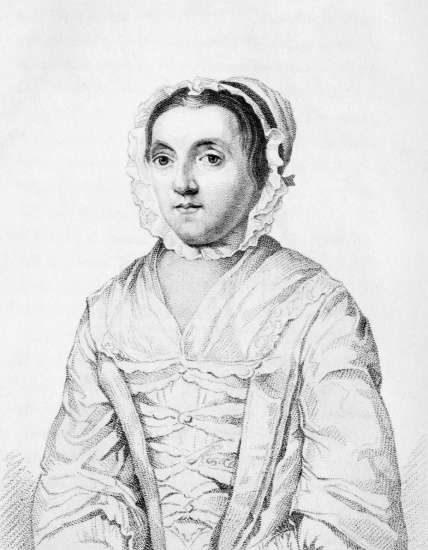In June of 1773, news reached England from Connecticut that Elizabeth Canning Treat had died. The announcement, carried in the newspapers of the time, put the final exclamation point on one of the most sensational trials England witnessed in the 1750s.

Elizabeth Canning
Most people in England knew about Treat’s life and how she came to Connecticut. Her trials had dominated the news of 1753 and 1754. Huge crowds, of both supporters and detractors, crowded the Old Bailey courthouse to hear her story. And to this day, no one has ever definitively established the truth behind it all.
Elizabeth Canning
In England, before her marriage, Elizabeth Treat was Elizabeth Canning. At 18, she worked as a maidservant in a middling London neighborhood. People described her as plump, pockmarked and shy.
On New Year’s Day in 1753 she disappeared. She would later tell the story that someone had robbed her and taken her to a house of prostitution. When she refused to turn to prostitution her captor locked her in a loft, a prisoner.
The 18-year-old returned to her home and her astonished mother 29 days later — skinny, dirty and bloodied from an injury to her ear.
After being taken to the house where she was held, Canning identified two women – Mary Squires and Susannah Wells – as her captors. The local alderman charged Wells with running a house of prostitution,, Squires faced the more serious charge of theft, having stolen Canning’s corset.
Canning had to pay for the prosecution of the case herself, the custom in England at the time. To raise funds, her supporters published details of the case to generate sympathy and donations.
Conflicting Stories
Soon, her supporters had built the case against Wells and Squires. Another woman living in the house corroborated Elizabeth’s story and filled in details. She said Squires’ son had robbed her and delivered her to the house. Squires was called a “gypsy” in the press accounts, and the story took on racial overtones: a gypsy kidnapped an innocent 18-year-old and tried to force her into prostitution.
At the end of the brief and raucous trial, a judge at the Old Bailey meted out justice. He ordered Wells branded on her hand for running the house of prostitution. He ordered Squires hanged for theft.

Sir Crisp Gascoyne
Sir Crisp Gascoyne, a judge at the Old Bailey, had watched the case with interest. He found Canning’s story unlikely, and upon seeing the verdict he opened his own investigation. He discovered one witness for Canning said she had been bullied into testifying falsely. Another witness said the mobs of Canning supporters had prevented him prevented from testifying. Outside the court, they threw mud and stones at anyone who did not support the girl.
Gascoyne investigated further and came up with witnesses who said Squires was not at home the day Canning said she arrived at the gypsy’s house. He began his own public relations crusade to gain clemency for Squires.
In late April and early May of 1754, Canning had to return to court to answer charges of perjury. Days of back-and-forth ensued, with Squires’ supporters saying she was not at home in January of 1753 when the crimes occurred. Canning’s supporters then shot down her arguments. In the end, the court convicted Canning of perjury.
Exile to Wethersfield
She would decline to discuss the issue further. Her critics then began questioning her loyalty to the Church of England, accusing her of consorting with Methodists. And when the final sentence on her was carried out — exile to America — her Methodist supporters arranged for her to stay with Congregational minister Elisha Williams and his family in Wethersfield, Conn.
And there the controversy ends over Elizabeth Canning and the mystery begins. The people of Wethersfield received her well. She married John Treat, a member of a prominent Wethersfield family that included former governor Robert Treat. Together they had three sons and a daughter. Elizabeth died in June of 1773, and the question of what happened to her in that first month of 1753 has never been settled.
Conspiracy theorists abound. Was she giving birth to a child, perhaps given to a member of the nobility that could not produce an heir? Was she somehow involved in a plot to acquire the fortune of Sir Hans Sloane? Or was she simply kidnapped as she said?
Could there be some other explanation?
This story was updated in 2023.

1 comment
Wonderful mystery, but there is a problem with dates. At the beginning of the story it states 1853-54, and later in the story 1753-54…hmmm
Comments are closed.